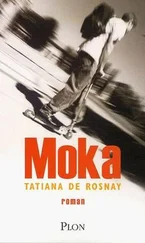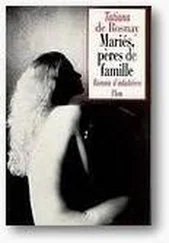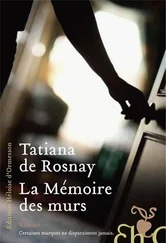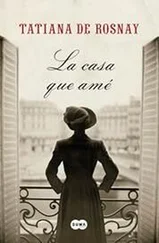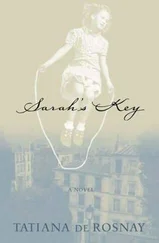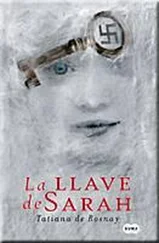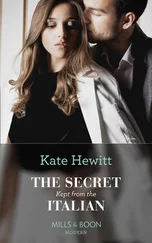Delphine keeps me waiting for a good ten minutes in a fancy ivory and crimson waiting room. Is this where spouses suspecting their other halves of adultery wait with anticipation and angst? There is no one around at this late hour. Delphine at last appears, a womanly creature dressed in ruby red, flourishing a warm smile. Private detectives don’t look like Columbo these days.
I sign a release form, show her my carte d’identité, and she hands me a large beige envelope that has been sealed with a thick wad of wax. This has not been opened in years, I can tell. “REY” is typed out in big black letters. I am told that what is inside is the originals of what was sent to my grandmother. I long to open it as soon as I get into the car, but I force myself to wait.
At home, I make coffee, light a cigarette, and sit down at the kitchen table. I draw a deep breath.
There is still time to put the envelope away. To never open it. To never know. I look around the familiar room. The boiling kettle, a scattering of crumbs on the counter, an unfinished glass of milk. The apartment is quiet, Lucas is no doubt asleep, and Margaux is in front of her computer. I wait, still. I wait for a long time.
Then I seize a knife and slit the envelope open. The seal gives way, cracks in two. It is done.

The first items that tumble out are a couple of black-and-white press clippings from Vogue and Jours de France magazines. My parents at cocktail parties, social events, races-1967, 1969, 1971, 1972. Monsieur and Madame François Rey. Madame wearing Dior, Jacques Fath, Schiaparelli. Were these dresses lent to her? I don’t remember her ever wearing them. How gorgeous she looked. So fresh, so pretty.
More press clippings, this time from Le Monde and Le Figaro. My father and the Vallombreux trial, the one that made him famous in the early seventies. I find two more small clippings: the announcement of my birth and of Mélanie’s in the Figaro’s Carnet du Jour. I then find a large manila envelope. Inside are three black-and-white photographs, two color ones. Bad quality, grainy close-ups. But I have no trouble recognizing my mother. She is with a tall, platinum-haired woman who seems older than she. Three of the photographs are shot in Paris, in the streets. My mother is looking up and smiling at the woman. They are not holding hands, but they are evidently close. It is fall or winter-they both have coats. The two color photos are taken in a restaurant or a hotel bar. They are sitting at a table. The blond woman is smoking. She is wearing a purple blouse and a pearl necklace. My mother’s face is somber, downcast eyes and tight mouth. In one photograph the woman is stroking my mother’s cheek.
I lay all the photographs out on the kitchen table carefully. I look at them for a while. A mosaic of my mother and this stranger. I know this is the woman Mélanie saw in our mother’s bed. This is the American Gaspard mentioned.
Inside the envelope is a typed letter addressed to my grandmother from the Agence Viaris. The date is January 12, 1974. A month before my mother died.
Dear Madame Rey,
As per your instructions and according to our contract, here is the information you requested concerning Clarisse Rey née Elzyère and Miss June Ashby. Miss Ashby, of American nationality, born in 1925 in Milwaukee, Wisconsin, has an art gallery in New York City on West 57th Street. She comes to Paris every month for business and stays at the Régina Hotel on the place des Pyramides in the first arrondissement.
Miss Ashby and Madame Rey, during the course of the weeks from September to December 1973, met every time Miss Ashby came to Paris, which totals five times. Madame Rey each time came to the Régina Hotel in the afternoons and went directly up to Miss Ashby’s room. Madame Rey came down again a couple of hours later. On one occasion, December 4, Madame Rey came after dinner and did not leave the hotel till the next morning at dawn.
Please find our invoice enclosed.
Agence Viaris, Private Investigators
I look closely at the photographs of June Ashby. A striking woman. Her eyes seem dark, but the photographs are not good, I can’t really tell. She has high cheekbones, the wide shoulders of a swimmer. She doesn’t look “butch.” There is even something intensely feminine about her-her long, slender limbs, the bead necklace around her neck, dangling earrings. I wonder what she said in English the day she came to confront Blanche, which sounded so horrible according to Gaspard. I wonder where she is now. I wonder how she remembers my mother.
I feel a movement and quickly turn. Margaux is standing directly behind me, wearing her dressing gown. Her hair is pulled off her face, making her look like Astrid.
“What is all this, Dad?”
My first reaction is to shamefacedly hide the photos, cram them back into the envelope, and invent some story about sorting out old documents. But I do not move.
It is too late to lie. Too late to be silent. Too late to pretend I don’t know.
“This was given to me tonight.”
She nods.
“The brunette. She looks so much like Mélanie… Isn’t that your mother?”
“Yes, that is my mother. And the blond lady is… her friend.”
Margaux sits down and examines each photograph with interest.
“What is all this about?”
No more lies. No more silence.
“My grandmother was having my mother and this woman followed by a private investigator.”
Margaux stares at me.
“Why would she do that?” Then it hits her. She is only fourteen, after all. “Oh,” she says slowly, her face flushing. “They were lovers, right?”
“Yes, they were.”
A pause.
“Your mother was having an affair with this lady?”
“That’s right.”
Margaux scratches her head thoughtfully. She whispers, “Is this like some kind of huge family secret that nobody ever talks about?”
“I guess so.”
She picks up one of the black-and-white photographs.
“She looked so much like Mélanie. It’s amazing.”
“She did.”
“Who is the other lady, her friend? Did you ever meet her?”
“An American. This happened a long time ago. If I ever met her, I don’t remember her.”
“What are you going to do with all this, Dad?”
“I don’t know,” I reply truthfully.
I unexpectedly have a vision of the Gois passage being lapped away by tongues of seawater. Soon, only the rescue poles indicate that a road lies deep beneath the surface. An uneasy feeling washes over me.
“Are you okay, Dad?”
Margaux’s hand grazes my arm. The gesture is such a rare one coming from her that it both startles and moves me.
“I’m okay, honey. Thanks. You get to bed now.”
She lets me kiss her. She slips away.
There is only one thing left in the envelope, a thin sheet of paper that has been crumpled and smoothed out. It is written on the Hotel Saint-Pierre stationery. The date reads August 19, 1973. The shock of my mother’s handwriting strikes me like a blow. I read the first lines with a thumping heart.
You have just left your room, and I am slipping this under your door, not leaving it in our usual safe hiding place, and I pray you get it before you catch your train back to Paris…

My head seems a little clearer, although I feel my heart still thrumming painfully, as it did in Gaspard’s room a couple of days ago. I go to the computer and type out “June Ashby” on Google. The first item that pops up is the art gallery that bears her name on Fifty-seventh Street in New York City. Specializes in modern and contemporary art by women. I search for data about her, but there is none on the site.
Читать дальше



